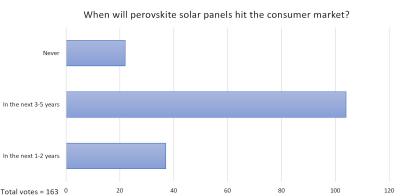CubicPV raises US$103 million for 10GW US wafer manufacturing plans and perovskite research
It was reported that U.S-based CubicPV secured US$103 million in equity financing. While it is meant to support its plans to develop a US silicon wafer production base, CubicPV also said that this capital will support its research into perovskite-silicon tandem technology.
“Today’s announcement underscores the considerable progress we’ve made, the depth of our engineering competence and the strength of our technologies to deliver a more powerful solar future,” said Frank van Mierlo, CEO of CubicPV. “We thank SCG Cleanergy for their confidence in our manufacturing goals and product roadmap.”
New collaborative research center to be funded and established in order to push tandem solar modules forward
The U.S. Department of Energy Solar Energy Technologies Office (SETO) has announced that a team of researchers, led by MIT and including the University of California San Diego, has been selected to receive a $11.25 Million cost-shared award to establish a new research center that will advance the development of next-generation solar cells for commercial use.
A collaborative effort with CubicPV, solar startup Verde Technologies, and Princeton University, the center will bring together teams of researchers to support the creation of perovskite-silicon tandem solar modules. These are solar cells made of stacked materials—silicon paired with perovskites—that together absorb more of the solar spectrum than single materials, resulting in a dramatic increase in efficiency. Their potential to generate significantly more power than conventional solar cells could make a meaningful difference in the race to combat climate change and the transition to a clean-energy future.
CubicPV to establish plant for 10 GW of conventional silicon wafer production, reports perovskite-related work is ongoing
U.S-based company CubicPV has announced plans to establish 10 GW of conventional mono wafer capacity in the United States.
While CubicPV reports that its new factory will produce conventional silicon wafers, the company said it will continue research and development of its tandem modules, which reportedly offer more than 30% greater efficiency than the highest efficiency conventional modules. The design stacks two solar cells, with silicon on the bottom, powered by CubicPV’s Direct Wafer technology, and perovskite on the top, the company claims that the tandem design “will dramatically increase the power of every acre of solar deployed.”
When will perovskite solar panels hit the market?
Perovskite solar panels have been under intensive R&D, and it seems as if commercial production is right around the corner. Some pilot-scale production lines are already functional, and companies are now ramping up production of perovskite panels, using various technologies.

UK-based Oxford PV, for example, recently announced that it has completed the build-out of its 100 MW manufacturing site in Germany, and it is on track to start full production in 2022. China's Microquanta Semiconductor perovskite panel factory is reportedly also nearing production (which should have started late 2020, but updates have not been available since), and another China-based company, GCL, has raised around $15 million USD to expand its pilot-scale production factory to mass production (100 MW).
CubicPV plans $1.1 billion investment under India's PLI scheme
CubicPV is said to be in talks with the Indian government to participate in the performance linked incentives (PLI) scheme for solar equipment manufacturers. CubicPV was established as a result of a collaboration between Hunt Perovskite Technologies and 1366 Technologies.
CubicPV reportedly plans to invest $1.1 billion to set up 10 GW solar wafer and cells manufacturing capacity in India over the next five years. Frank Van Mierlo, CEO of CubicPV, said that the company is planning to bring its innovative products in the solar equipment category, such as wafers and semiconductors, to India.
Pagination
- Previous page
- Page 2
- Next page



